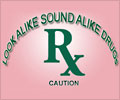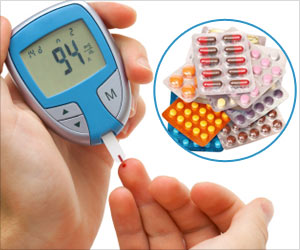Wearable cameras, powered by AI, help detect medication errors by monitoring dosage and administration, ensuring accuracy and enhancing patient safety in real-time.

Detecting clinical medication errors with AI enabled wearable cameras
Go to source) The system could become a critical safeguard, especially in operating rooms, intensive-care units and emergency-medicine settings, said co-lead author Dr. Kelly Michaelsen, an assistant professor of anesthesiology and pain medicine at the University of Washington School of Medicine.
‘Imagine a #wearable device that could prevent #medicationerrors. It's already here! #AI is revolutionizing patient safety. #drugsafety #drugerrors’





“The thought of being able to help patients in real time or to prevent a medication error before it happens is very powerful,” she said. “One can hope for a 100% performance but even humans cannot achieve that. In a survey of more than 100 anesthesia providers, the majority desired the system to be more than 95% accurate, which is a goal we achieved.” Drug Administration Errors
Drug administration errors are the most frequently reported critical incidents in anesthesia, and the most common cause of serious medical errors in intensive care. In the bigger picture, an estimated 5% to 10% of all drugs given are associated with errors. Adverse events associated with injectable medications are estimated to affect 1.2 million patients annually at a cost of $5.1 billion.Syringe and vial-swap errors most often occur during intravenous injections in which a clinician must transfer the medication from vial to syringe to the patient. About 20% of mistakes are substitution errors in which the wrong vial is selected or a syringe is mislabeled. Another 20% of errors occur when the drug is labeled correctly but administered in error.
Safety measures, such as a barcode system that quickly reads and confirms a vial’s contents, are in place to guard against such accidents. But practitioners might sometimes forget this check during high-stress situations because it is an extra step in their workflow.
The researchers’ aim was to build a deep-learning model that, paired with a GoPro camera, is sophisticated enough to recognize the contents of cylindrical vials and syringes, and to appropriately render a warning before the medication enters the patient.
Advertisement
The video system does not directly read the wording on each vial, but scans for other visual cues: vial and syringe size and shape, vial cap color, label print size.
Advertisement
Further, the computational model had to be trained to focus on medications in the foreground of the frame and to ignore vials and syringes in the background.
“AI is doing all that: detecting the specific syringe that the healthcare provider is picking up, and not detecting a syringe that is lying on the table,” Gollakota said.
This work shows that AI and deep learning have potential to improve safety and efficiency across a number of healthcare practices. Researchers are just beginning to probe the potential, Michaelsen said. The study also included researchers from Carnegie Mellon University and Makerere University in Uganda. The Toyota Research Institute built and tested the system.
The Washington Research Foundation, Foundation for Anesthesia Education and Research, and a National Institutes of Health grant (K08GM153069) funded the work.
The authors’ declared their potential conflicts of interest in their paper, which will be made available on request.
Reference:
- Detecting clinical medication errors with AI enabled wearable cameras - (https://www.nature.com/articles/s41746-024-01295-2)











